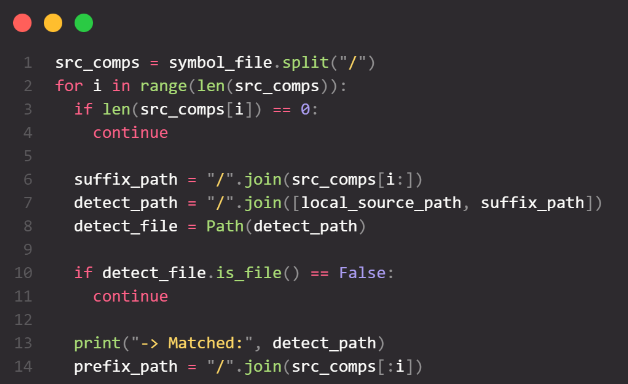解答C++map和set的使用
该系列文章是本人在学习C++map和set 的过程中总结下来的,里面涉及到相关源码,请结合我的源码注释 源码分析资料进行阅读
一、关联式容器
- 容器分类:
- 序列式容器:初阶阶段中学习过STL中的部分容器,如:vector、list、deque等,这些容器统称为序列式容器,因为其底层为线性序列的数据结构,里面存储的是元素本身
- 关联式容器:关联式容器也是用来存储数据的,与序列式容器不同的是,其里面存储的是<key, value>结构的键值对(保存映射关系),在数据检索时比序列式容器效率更高
根据应用场景的不同,STL总共实现了两种不同结构的关联式式容器:树型结构与哈希结构
- 关联式容器:
|
关联式容器 |
容器结构 |
底层实现 |
|
set、map、multiset、multimap |
树型结构 |
平衡搜索树(红黑树) |
|
unordered_set、unordered_map、unordered_multiset、unordered_multimap |
哈希结构 |
哈希表,哈希桶 |
- 二、键值对
概念:
用来表示具有一一对应关系的一种结构,该结构中一般只包含两个成员变量key和value,key代表键值,value表示与key对应的信息
示例:
现在要建立一个英汉互译的字典,那该字典中必然有英文单词与其对应的中文含义,而且,英文单词与其中文含义是一一对应的关系,即通过该应该单词,在词典中就可以找到与其对应的中文含义
- SGI-STL中关于键值对的定义:
template <class T1, class T2>
struct pair
{
typedef T1 first_type;
typedef T2 second_type;
T1 first;
T2 second;
pair(): first(T1()), second(T2())
{}
pair(const T1& a, const T2& b): first(a), second(b)
{}
};
三、C++中的set
1、set的介绍
- 概念:
set是按照一定次序存储元素的容器,这种次序使用set的迭代器遍历set中的元素,可以得到有序序列
注:与map/multimap不同,map/multimap中存储的是真正的键值对<key, value>,set中只放value,但在底层实际存放的是由<value, value>构成的键值对
在set中,元素的value也标识它(value就是key,类型为T),set中插入元素时,只需要插入value即可,不需要构造键值对,并且每个value必须是唯一的(可以使用set进行去重)
注:set中的元素不能在容器中修改(元素总是const,修改无法保证数据的次序),但是可以从容器中插入或删除它们
在内部,set中的元素总是按照其内部比较对象(类型比较)所指示的特定严格弱排序准则进行排序注:默认按照小于来比较,中序遍历后为升序序列
set容器通过key访问单个元素的速度通常比unordered_set容器慢,但它们允许根据顺序对子集进行直接迭代
set在底层是用二叉搜索树(红黑树)实现的
注:接近完全二叉树,查找的时间复杂度为logN
2、set的使用
- set的模板参数列表:解释:
解释:
T: set中存放元素的类型,实际在底层存储<value, value>的键值对
Compare:比较方法,set中元素默认按照小于来比较(中序遍历为升序)
Alloc:set中元素空间的管理方式,使用STL提供的空间配置器管理
注意:在使用set时,需要包含头文件set
- set的构造:
- 示例:
void testset1()
{
set<int> set1;//空构造
int num[] = { 4,5,1,8,2,4,6,3 };
set<int> set2(num, num+sizeof(num)/sizeof(num[0]));//对于数组使用原生指针构造
set<int> set3(set2);//拷贝构造
// 范围for打印,从打印结果中可以看出:set可去重
for (auto& e : set3)
cout << e << " ";
cout << endl;
}
- 结果:
- set的迭代器:
- 示例:
void testset2()
{
int num[] = { 4,5,1,8,2,4,6,3 };
set<int> set1(num, num + sizeof(num) / sizeof(num[0]));//对于数组使用原生指针构造
// 范围for打印,从打印结果中可以看出:set可去重
for (auto& e : set1)
cout << e << " ";
cout << endl;
//迭代器正向遍历
auto it1 = set1.begin();
while (it1 != set1.end())
{
cout << *it1 << " ";
it1++;
}
cout << endl;
//迭代器反向遍历
auto it2 = set1.rbegin();
while (it2 != set1.rend())
{
cout << *it2 << " ";
it2++;
}
}
- 结果:
- set修改操作:
- 示例:
void testset3()
{
int num[] = { 1,8,4,5,3,9,2,6,7,4,5 };
set<int> set;
for (int e : num)//插入
{
auto ret=set.insert(e);
if (ret.second == false)
cout << e << "插入失败" << endl;
}
for (auto& e : set)//遍历
cout << e << " ";
cout << endl;
cout << "count 5:" << set.count(5) << endl;
set.erase(set.find(8));//删除
for (auto& e : set)
cout << e << " ";
cout << endl;
}
- 结果:
四、C++中的multiset
multiset的介绍:
multiset容器与set容器实现和接口基本一致,唯一区别就是,multiset允许键值冗余,即multiset容器当中存储的元素是可以重复的
注意:对于find来说multiset返回底层搜索树中序的第一个键值为key的元素的迭代器
- 示例:
void TestMSet()
{
int array[] = { 2, 1, 2, 1, 6, 0, 1, 6, 4, 7 };
// 允许键值冗余
multiset<int> s(array, array + sizeof(array) / sizeof(array[0]));
for (auto& e : s)
cout << e << " ";
cout << endl;
}
- 结果:
五、C++中的map
1、map的介绍
- 概念:
- map是关联容器,它按照特定的次序(按照key来比较)存储由键值key和值value组合而成的元素
- 在map中,键值key通常用于排序和惟一地标识元素,而值value中存储与此键值key关联的内容。键值key和值value的类型可能不同,并且在map的内部,key与value通过成员类型value_type绑定在一起,为其取别名称为pair:typedef pair value_type;
- 在内部map中的元素总是按照键值key进行比较排序以及查找
- map中通过键值访问单个元素的速度通常比unordered_map容器慢,但map允许根据顺序对元素进行直接迭代(即对map中的元素进行迭代时,可以得到一个有序的序列)
- map支持下标访问符,即在[]中放入key,就可以找到与key对应的value(这里是在insert上的一个封装)
- map通常被实现为二叉搜索树(更准确的说:平衡二叉搜索树(红黑树)
注:set和map基本差不多,但是set是k模型,而map是kv模型,这导致在部分地方又有些不一样
2、map的使用
- map的模板参数说明:
- 解释:
- key: 键值对中key的类型
- T: 键值对中value的类型
- Compare: 比较器的类型,map中的元素是按照key来比较的,缺省情况下按照小于来比较,一般情况
- 下(内置类型元素)该参数不需要传递,如果无法比较时(自定义类型),需要用户自己显式传递比较规则
- (一般情况下按照函数指针或者仿函数来传递)
- Alloc:通过空间配置器来申请底层空间,不需要用户传递,除非用户不想使用标准库提供的空间配置器
注意:在使用map时,需要包含头文件map
map的构造:
- 示例:
void testmap1()
{
map<int, int> map1;//空构造
int num[] = { 1,5,9,4,8,2,3,1,5,4,5,7 };
for (auto e : num)
{
map1.insert(make_pair(e,e));
}
map<int, int> map2(map1.begin(),map1.end());//迭代区间构造
map<int, int> map3(map2);//拷贝构造
for (auto& e : map3)
{
cout << e.first << ":" << e.second << endl;
}
}
- 结果:
- 示例:
void testmap2()
{
map<int, int> map1;//空构造
int num[] = { 1,5,9,4,8,2,3,1,5,4,5,7 };
for (auto e : num)
{
//map1.insert(pair<int,int>(e, e));
map1.insert(make_pair(e, e));//等同于
}
//迭代器正向遍历
auto it1 = map1.begin();
while (it1 != map1.end())
{
//cout << (*it1).first << ":"<<(*it1).second<<endl;
cout << it1->first << ":"<<it1->second<<endl;//等同于
it1++;
}
//迭代器反向遍历
auto it2 = map1.rbegin();
while (it2 != map1.rend())
{
cout << it2->first << ":" << it2->second << endl;//等同于
it2++;
}
}
- 结果:
- 解释:
- 在元素访问时,operator[]通过key找到与key对应的value然后返回其引用,当key不存在时,operator[]用默认value与key构造键值对然后插入,返回该默认value
- 示例:做统计
void testmap3()
{
int arr[] = { 1,4,8,5,9,6,4,2,9,6,4,1,8,5 };
map<int, int, greater<int>> countmap;
for (auto e : arr)
{
countmap[e]++;
//当不存在对应key则插入键值pair(e,int()),这里的int()即是0 返回0再++
//当存在对应key则返回对应的value,再++
}
auto it1 = countmap.begin();
while (it1 != countmap.end())
{
//cout << (*it1).first << ":"<<(*it1).second<<endl;
cout << it1->first << ":" << it1->second << endl;//等同于
it1++;
}
}
- 结果:
- 示例:
void testmap4()
{
int num[] = { 1,8,4,5,3,9,2,6,7,4,5 };
map<int,int> map;
for (int e : num)//插入
{
auto ret = map.insert(make_pair(e,e));
if (ret.second == false)
cout << e << "插入失败" << endl;
}
for (auto& e : map)//遍历
cout << e.first << ":" << e.second << endl;
cout << "count 5:" << map.count(5) << endl;
map.erase(map.find(8));//删除
for (auto& e : map)//遍历
cout << e.first << ":" << e.second << endl;
}
- 结果:
六、C++中的multimap
- multimap的介绍:
- multimap容器与map容器的底层实现以及成员函数的接口都是基本一致,区别是multimap允许键值冗余,即multimap容器当中存储的元素是可以重复的
- 注意:
- 对于find来说multimap返回底层搜索树中序的第一个键值为key的元素的迭代器
- 由于multimap容器允许键值冗余,调用[ ]运算符重载函数时,应该返回键值为key的哪一个元素的value的引用存在歧义,因此在multimap容器当中没有实现[ ]运算符重载函数
- 示例:
void testMmap()
{
multimap<int, string> mm;
//允许键值冗余
mm.insert(make_pair(2, "two"));
mm.insert(make_pair(2, "double"));
mm.insert(make_pair(2, "2"));
mm.insert(make_pair(2, "second"));
mm.insert(make_pair(1, "one"));
mm.insert(make_pair(3, "three"));
for (auto e : mm)
{
cout << e.first << ":" << e.second << endl;
}
cout << endl;
//从第一个2找起,遍历到最后一个
auto pos = mm.find(2);
while (pos != mm.end() && pos->first == 2)
{
cout << pos->first << ":" << pos->second << endl;
pos++;
}
}
- 结果:
小结:
本文到这里就结束了,如果你觉得这篇文章对你有帮助 点赞关注























